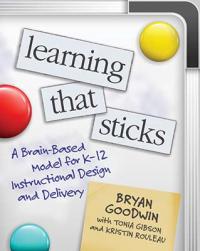
As new information enters our brains, we hold it in our short-term working memories, which has some limitations we need to keep in mind as educators. First, as the name implies, short-term memory only holds onto a new bit of information for a few seconds before it begins to fade. With concerted focus and effort, we can keep new information in our working memories longer. Nonetheless, holding information in our memories is mentally taxing, so a young person’s brain begins to “time out” after about 5 minutes (longer for adults). Second, our brains can only hold a limited amount of information at once—seven plus or minus two bits of information has been a long-held assumption, though more recent studies suggest it may be as few as four bits of information, especially for younger learners.
What all of this means is that after absorbing a few bits of information during a relatively short period of time, our brains must pause and process that new information—connecting it with prior knowledge (which makes it easier to retain) or clustering smaller bits of information into larger concepts or big ideas (which leaves with us fewer ideas to juggle). In short, we must make sense of learning.
So, how can we help remote learners do that? Here are a few tips drawn from the science of learning and education research.
- Engage students in structured small-group learning in breakout rooms. After students read a text or are introduced to new concepts, use breakout rooms to provide them with structured small-group discussions to make sense of their learning (while yourself hopping among breakout rooms to ensure students stay on task). One such structure is reciprocal teaching; each student in a group of four plays an assigned role in the discussion (e.g., summarizer, questioner, clarifier, or predictor). Afterward, small groups share what they discussed with the larger class. Another research-based technique is numbered heads together. Students number off 1 through 4 and then move into four-person groups that include all four numbers to discuss or solve teacher-provided, higher-order questions or problems. Afterward, when students return to the large group, randomly call on students by number to respond to the prompt, thereby ensuring individual and shared responsibility for engaging in the small-group discussions.
- Engage students in think-write-pair-share discussions. Students also benefit from (and many prefer to engage in) individual reflection on new learning. You’re likely already familiar with the think-pair-share technique in which you provide a thought-provoking question that students consider prior to discussing their response with a neighbor. Take this technique a step further with remote learners, encouraging them to draft written responses to the question—in keeping with the adage that we don’t know what we think until we see what we’ve written, as well as the benefits of handwritten notes I discussed in my previous post. After a few minutes of reflecting and writing, students share their ideas with one another through breakout room discussions or transcribing what they’ve written into the chat function of your online learning platform. The key idea here, of course, is to provide higher-order questions that help students make meaning by analyzing, evaluating or synthesize what they’re learning.
- Engage students in developing written summaries of their new learning. Research finds that prompting students to create written summaries of learning is one of the most effective techniques for helping them make sense of new learning and transfer it to memory—far more effective, in fact, that just taking notes or responding to study guide questions. Why? Most likely because written summaries compel them to think about their learning, connecting ideas and relating them to prior knowledge. The point here, though, isn’t to stop asking questions or taking notes, but rather, to complement these strategies with student writing—especially at the end of a lesson or reading assignment to help them process new learning in deeper and more meaningful ways. Written summaries are also screen-free, giving Zoom-fatigued students a welcome break from staring at their screens.

